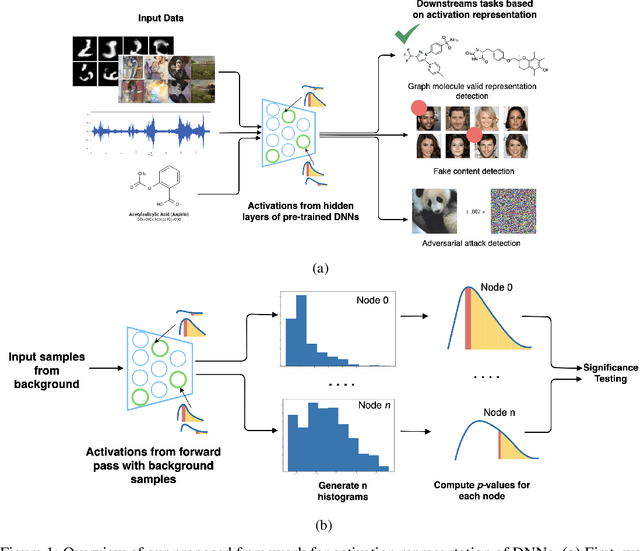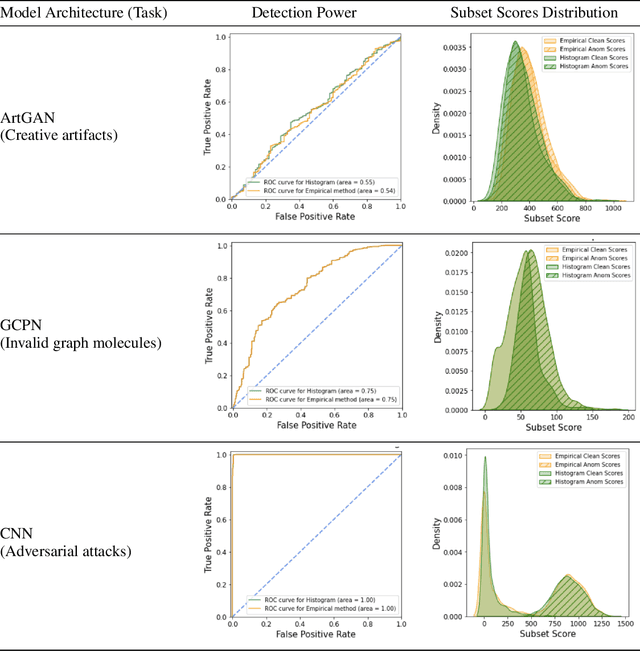Tanya Akumu
Efficient Representation of the Activation Space in Deep Neural Networks
Dec 13, 2023



Abstract:The representations of the activation space of deep neural networks (DNNs) are widely utilized for tasks like natural language processing, anomaly detection and speech recognition. Due to the diverse nature of these tasks and the large size of DNNs, an efficient and task-independent representation of activations becomes crucial. Empirical p-values have been used to quantify the relative strength of an observed node activation compared to activations created by already-known inputs. Nonetheless, keeping raw data for these calculations increases memory resource consumption and raises privacy concerns. To this end, we propose a model-agnostic framework for creating representations of activations in DNNs using node-specific histograms to compute p-values of observed activations without retaining already-known inputs. Our proposed approach demonstrates promising potential when validated with multiple network architectures across various downstream tasks and compared with the kernel density estimates and brute-force empirical baselines. In addition, the framework reduces memory usage by 30% with up to 4 times faster p-value computing time while maintaining state of-the-art detection power in downstream tasks such as the detection of adversarial attacks and synthesized content. Moreover, as we do not persist raw data at inference time, we could potentially reduce susceptibility to attacks and privacy issues.
Weakly Supervised Detection of Hallucinations in LLM Activations
Dec 05, 2023



Abstract:We propose an auditing method to identify whether a large language model (LLM) encodes patterns such as hallucinations in its internal states, which may propagate to downstream tasks. We introduce a weakly supervised auditing technique using a subset scanning approach to detect anomalous patterns in LLM activations from pre-trained models. Importantly, our method does not need knowledge of the type of patterns a-priori. Instead, it relies on a reference dataset devoid of anomalies during testing. Further, our approach enables the identification of pivotal nodes responsible for encoding these patterns, which may offer crucial insights for fine-tuning specific sub-networks for bias mitigation. We introduce two new scanning methods to handle LLM activations for anomalous sentences that may deviate from the expected distribution in either direction. Our results confirm prior findings of BERT's limited internal capacity for encoding hallucinations, while OPT appears capable of encoding hallucination information internally. Importantly, our scanning approach, without prior exposure to false statements, performs comparably to a fully supervised out-of-distribution classifier.
 Add to Chrome
Add to Chrome Add to Firefox
Add to Firefox Add to Edge
Add to Edge